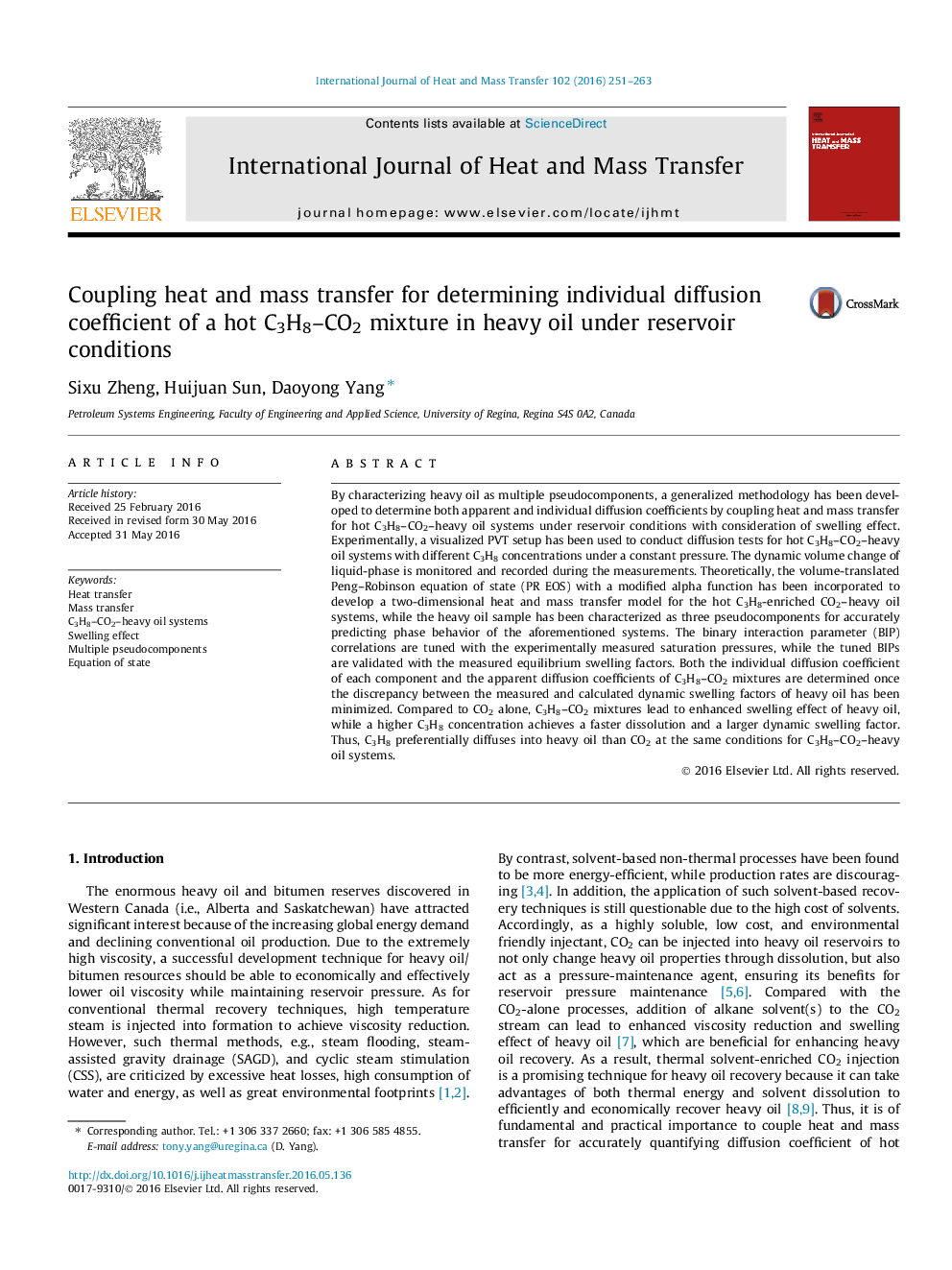| Article ID | Journal | Published Year | Pages | File Type |
|---|---|---|---|---|
| 7055085 | International Journal of Heat and Mass Transfer | 2016 | 13 Pages |
Abstract
By characterizing heavy oil as multiple pseudocomponents, a generalized methodology has been developed to determine both apparent and individual diffusion coefficients by coupling heat and mass transfer for hot C3H8-CO2-heavy oil systems under reservoir conditions with consideration of swelling effect. Experimentally, a visualized PVT setup has been used to conduct diffusion tests for hot C3H8-CO2-heavy oil systems with different C3H8 concentrations under a constant pressure. The dynamic volume change of liquid-phase is monitored and recorded during the measurements. Theoretically, the volume-translated Peng-Robinson equation of state (PR EOS) with a modified alpha function has been incorporated to develop a two-dimensional heat and mass transfer model for the hot C3H8-enriched CO2-heavy oil systems, while the heavy oil sample has been characterized as three pseudocomponents for accurately predicting phase behavior of the aforementioned systems. The binary interaction parameter (BIP) correlations are tuned with the experimentally measured saturation pressures, while the tuned BIPs are validated with the measured equilibrium swelling factors. Both the individual diffusion coefficient of each component and the apparent diffusion coefficients of C3H8-CO2 mixtures are determined once the discrepancy between the measured and calculated dynamic swelling factors of heavy oil has been minimized. Compared to CO2 alone, C3H8-CO2 mixtures lead to enhanced swelling effect of heavy oil, while a higher C3H8 concentration achieves a faster dissolution and a larger dynamic swelling factor. Thus, C3H8 preferentially diffuses into heavy oil than CO2 at the same conditions for C3H8-CO2-heavy oil systems.
Related Topics
Physical Sciences and Engineering
Chemical Engineering
Fluid Flow and Transfer Processes
Authors
Sixu Zheng, Huijuan Sun, Daoyong Yang,
